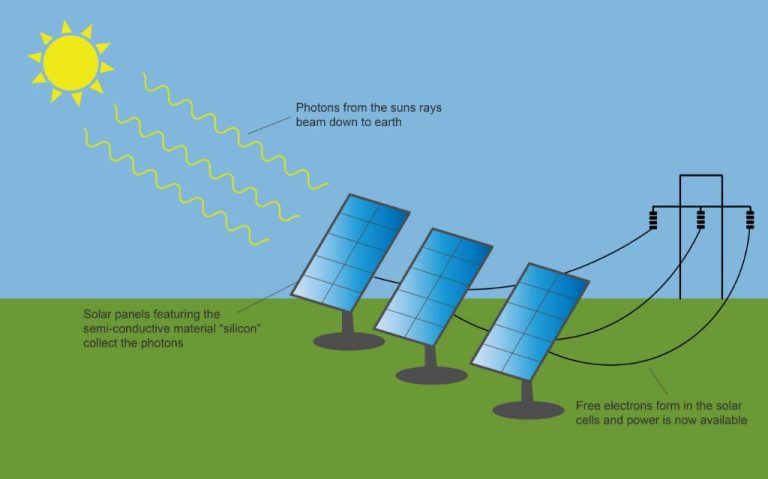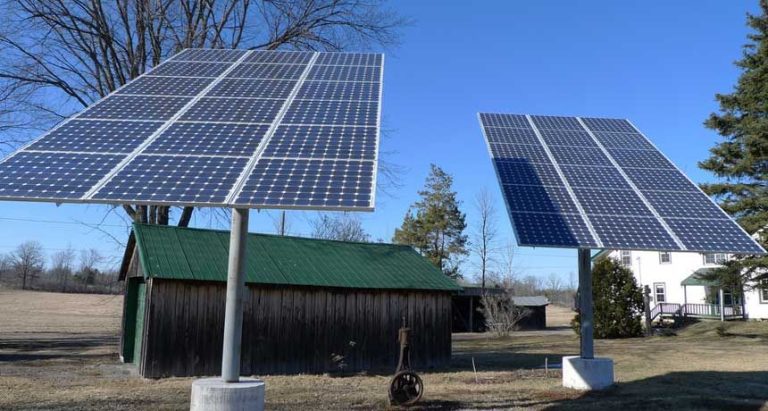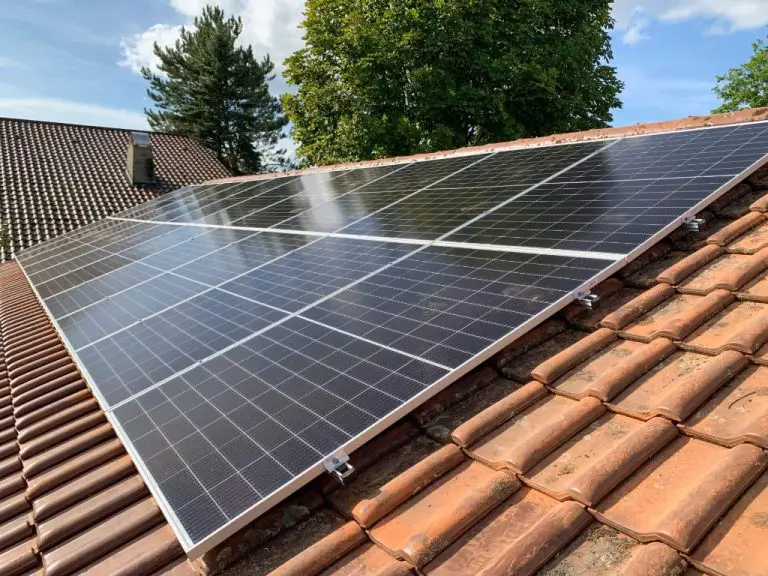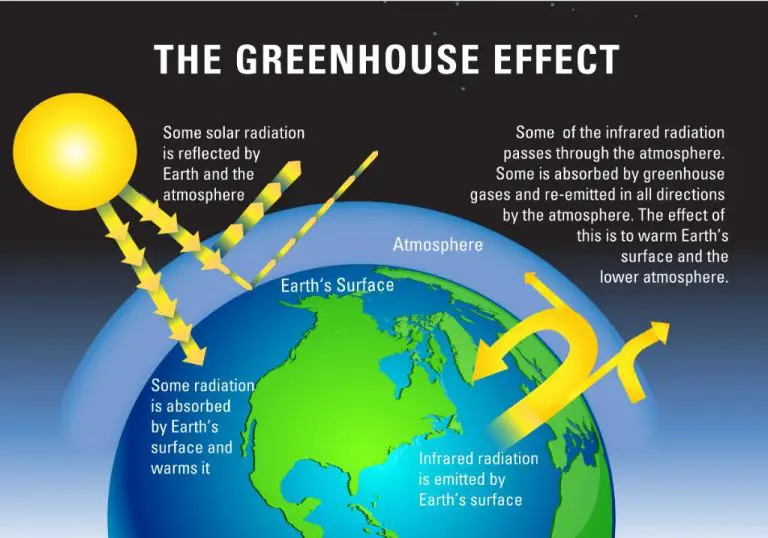Why Is Solar Energy So Important For Green Plants?
Solar energy from the sun is the ultimate source of energy for most life on Earth. Through the process of photosynthesis, green plants are able to capture sunlight and convert it into chemical energy that fuels plant growth and development. Photosynthesis is the process by which plants use sunlight, carbon dioxide, and water to create their food. This gives plants the energy they need to grow, reproduce, and adapt to their environments. Without photosynthesis and the constant stream of solar energy from the sun, plants could not exist.
In this article, we will explore why solar energy is so vitally important for all green plants on Earth. Key sections will cover the process of photosynthesis itself, the role of solar energy as the primary source of energy for plants, and how this solar-derived energy enables critical functions like plant growth, reproduction, and ecosystem adaptations. The conclusion will summarize why solar energy truly is life-giving energy for the plant kingdom.
Photosynthesis
Photosynthesis is the process by which plants use sunlight, carbon dioxide, and water to create their own food. During photosynthesis, plants absorb light energy using chlorophyll in their leaves. This energy is used to convert carbon dioxide from the air and water into glucose. Glucose is a simple sugar that plants use as an energy source to grow and function.
The overall chemical reaction of photosynthesis is:
6CO2 + 6H2O + Light Energy → C6H12O6 + 6O2
This means that for every 6 molecules of carbon dioxide and 6 molecules of water consumed, 1 molecule of glucose sugar and 6 molecules of oxygen is produced. The oxygen is released into the air as a waste product. The glucose molecule contains the carbon, hydrogen and oxygen atoms from the carbon dioxide and water in a rearranged formation that stores chemical energy the plant can use. This conversion of light energy into chemical energy is essential for nearly all life on Earth.
Primary Source of Energy
Solar energy is the main source of energy for plants. Through the process of photosynthesis, plants are able to convert sunlight into chemical energy that fuels growth and sustains life. The sun provides the power that enables plants to produce carbohydrates from carbon dioxide and water. Without exposure to adequate sunlight, plants cannot complete photosynthesis and will be unable to thrive.
The radiant energy of sunlight is absorbed by chlorophyll and other pigments in plant cells. This absorbed light energy is then used to drive photosynthesis. The sugars produced via photosynthesis allow plants to grow roots, stems, leaves, flowers, and fruits. Photosynthesis also supplies plants with the chemical building blocks they need for maintenance, repair, and other metabolic functions. Additionally, the carbohydrates resulting from photosynthesis can be stored for later use. In this way, sunlight provides the foundation that allows plants to survive, reproduce, and adapt over generations.
In summary, solar energy empowers plants to grow, develop, and perpetuate their species. Sunlight enables photosynthesis, which fuels plant life. Without the constant stream of solar energy from the sun, plants could not exist.
Solar Energy Powers Plant Growth
Plants require solar energy to grow and increase in size. Through photosynthesis, plants use the sun’s energy along with carbon dioxide and water to produce carbohydrates that fuel plant growth. These carbohydrates provide the molecular building blocks that allow plants to increase their biomass and grow larger. Solar energy powers this anabolic process of plant growth.
The rate of plant growth is directly correlated with the amount of solar energy available. With more exposure to sunlight, plants can photosynthesize faster and produce more carbohydrates to facilitate increased growth. In low-light conditions, plant growth is stunted due to insufficient solar energy to drive photosynthesis and biomass production at an optimal rate.
Maximizing access to sunlight allows plants to achieve their full genetic potential for growth. Solar energy fuels the biological processes that enable plants to increase in size, produce more leaves, grow thicker stems, and expand their root structures. By harnessing the sun’s abundant energy through photosynthesis, plants can grow rapidly and robustly.
Solar Energy Drives Plant Development
Plants go through various stages of development and growth during their lifetimes. This includes germination, seedling growth, vegetative growth, flowering, and seed production. At each stage, plants rely heavily on solar energy to power the developmental transitions and new growth.
For example, when a seed germinates, it must first absorb water to activate metabolic processes. The young seedling then emerges and begins photosynthesizing to produce necessary sugars and energy for cell division and elongation of the stem and roots. During vegetative growth, the plant focuses its energy on leaf, stem, and root development which allows for greater sunlight capture and growth capacity.
When the plant is mature, it will use solar energy to produce blooms, set seed, and complete reproduction. The energy from sunlight fuels the biochemical pathways and signals that activate these developmental stages. Without adequate solar energy capture, plants would be unable to progress through their life cycles.
Solar Energy is Essential for Plant Survival
Solar energy powers several key life processes that are absolutely critical for a plant’s survival. Photosynthesis converts the sun’s energy into biochemical energy. This powers essentially every function needed for the plant to live.
Through photosynthesis, solar energy produces the sugars, proteins, lipids, and other organic compounds plants need. These organic molecules fuel metabolism, structure building, transport, response, and all other physiological processes.
Without photosynthesis converting solar energy, plants would not obtain the essential nutrients they need. Photosynthesis also produces oxygen, which plants themselves require for cellular respiration. The energy from the sun is directly responsible for producing the basic compounds and oxygen that allow plants to live.
Given that solar energy powers photosynthesis, which generates the fundamental molecules and conditions necessary for life, sunlight is utterly essential for a plant’s survival. Solar energy enables plants to live by providing the core elements that sustain basic functions.
Reproduction
Solar energy plays a critical role in enabling plants to reproduce and propagate their species. Through photosynthesis, plants convert sunlight into chemical energy that fuels the biological processes necessary for reproduction. This includes producing flowers, fruits, seeds, spores, and other reproductive structures.
The amount of solar energy a plant receives can directly impact its fertility and seed production. Plants need sufficient sunlight to develop healthy flowers with viable reproductive organs. The energy obtained from the sun provides nutrients for the plant to grow pollen, produce nectar to attract pollinators, and supply food reserves to the seeds. Once pollinated, the sugars from photosynthesis help embryos within seeds to mature and propagation to occur.
Without adequate solar energy, many plants would fail to complete their life cycle through reproduction. Their ability to reproduce is highly dependent on sufficient sunlight to create the building blocks necessary for this vital process. This demonstrates the indispensable role solar energy plays in a plant’s reproductive capacity and survival as a species.
Adaptation
Plants have evolved and adapted over millions of years to optimize their ability to capture solar energy. The sunlight that plants absorb allows them to undergo physiological changes and exhibit specialized behaviors that aid in their survival and reproduction.
For example, plants can angle or reposition their leaves to maximize light exposure. This tropism allows the plant to adapt to changes in sunlight availability throughout the day or seasons. Plants also use solar energy to bloom flowers or release pollen at optimal times to attract pollinators.
Solar energy powers a plant’s responses to stresses like drought, high temperatures, or shade from competitors. With sufficient sunlight, plants can increase production of heat shock proteins, alter leaf thickness, or activate other molecular mechanisms to withstand environmental challenges.
By harnessing the Sun’s energy, plants gain the resources they need to better cope with their surroundings. This essential adaptation capacity allows plant species to occupy diverse habitats across the globe.
Ecosystem Role
Solar energy powers plants’ ecosystem roles and underpins food webs and biogeochemical cycles. Through photosynthesis, plants convert solar energy into chemical energy that gets passed up food chains and webs, fueling herbivores, omnivores, and carnivores. Plants are the original source of energy that makes ecosystems function. Solar energy also powers plants’ roles in major biogeochemical cycles like the carbon, nitrogen, and water cycles. Plants absorb carbon dioxide, water, and nutrients from soil, using the sun’s energy to split water molecules and fix carbon, releasing oxygen into the atmosphere. When plants decompose or are consumed, they return carbon, nutrients, and water to the soil and environment to be reused. Solar energy allows plants to drive these critical cycles that maintain ecosystems and make life on Earth possible.
Conclusion
In summary, solar energy is extremely important for green plants. Through the process of photosynthesis, plants are able to convert sunlight into chemical energy that they can use for growth, development, survival, and reproduction. Solar energy powers the entire ecosystem that plants inhabit by providing the original source of energy that flows through the food chain.
The key takeaways are:
- Photosynthesis allows plants to convert solar energy into chemical energy that they can use.
- This chemical energy is essential for plant growth, development, survival, and reproduction.
- Plants form the base of most ecosystems and provide energy to other organisms through the food chain.
- Without solar energy, ecosystems would collapse due to lack of energy input.
The implications of this are that solar energy plays a critical role in sustaining life on Earth. As primary producers in most ecosystems, plants provide food and oxygen while absorbing carbon dioxide. The availability of solar energy places limits on where green plants can thrive. Any changes that affect the amount of solar energy reaching Earth’s surface, such as air pollution, volcanic eruptions, or changes in Earth’s orbit, can greatly impact ecosystems by reducing the energy available to green plants.





